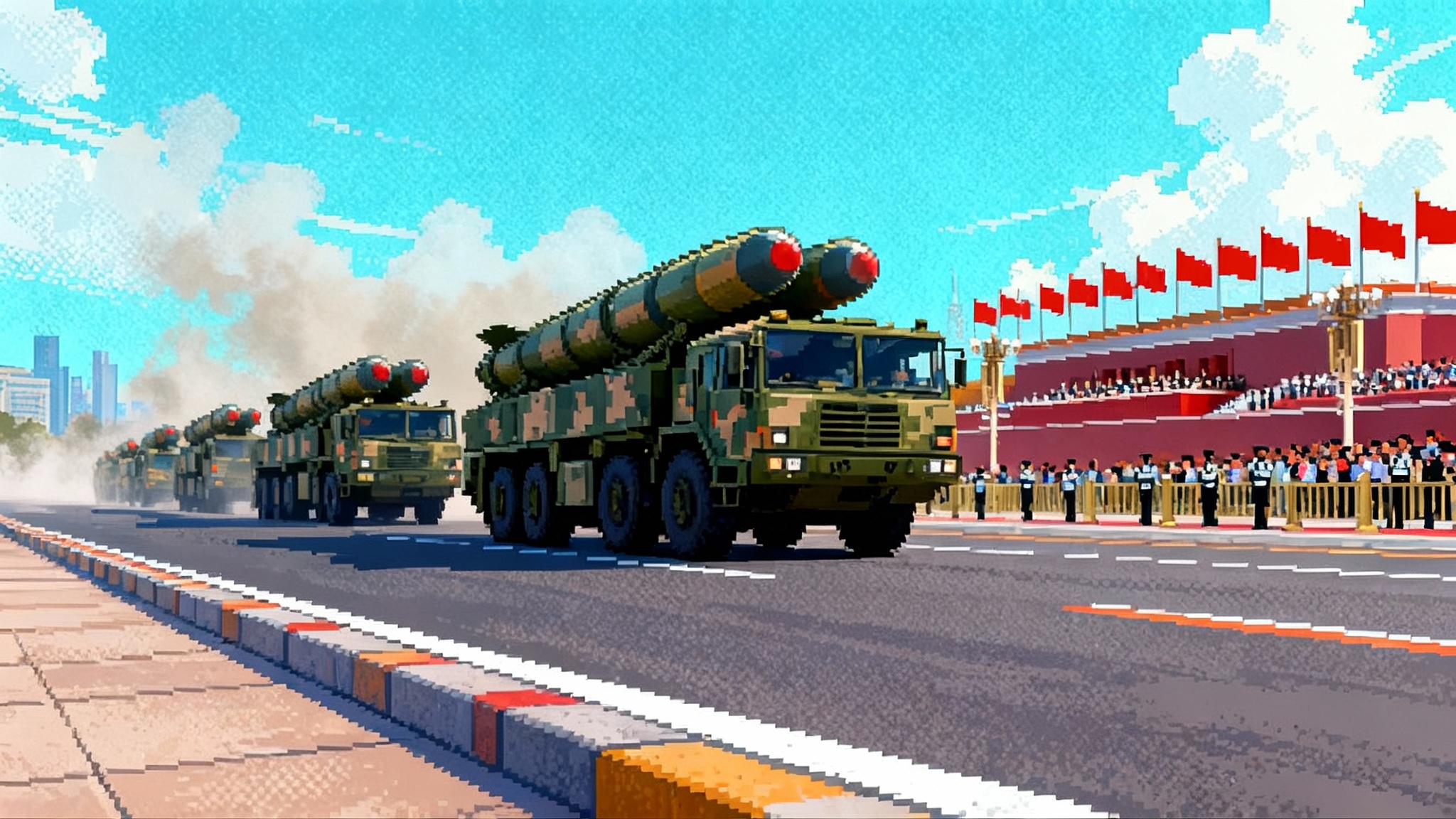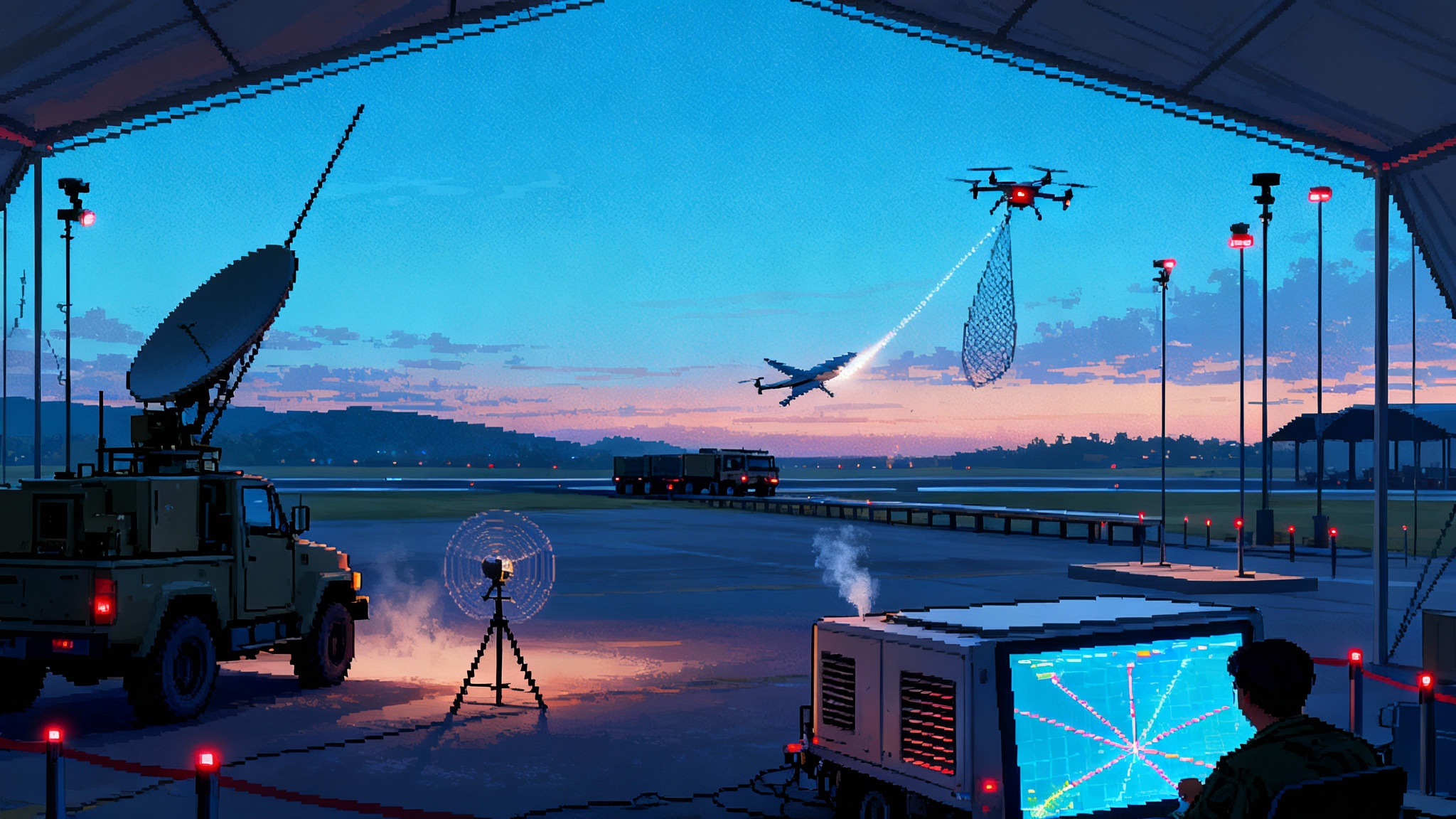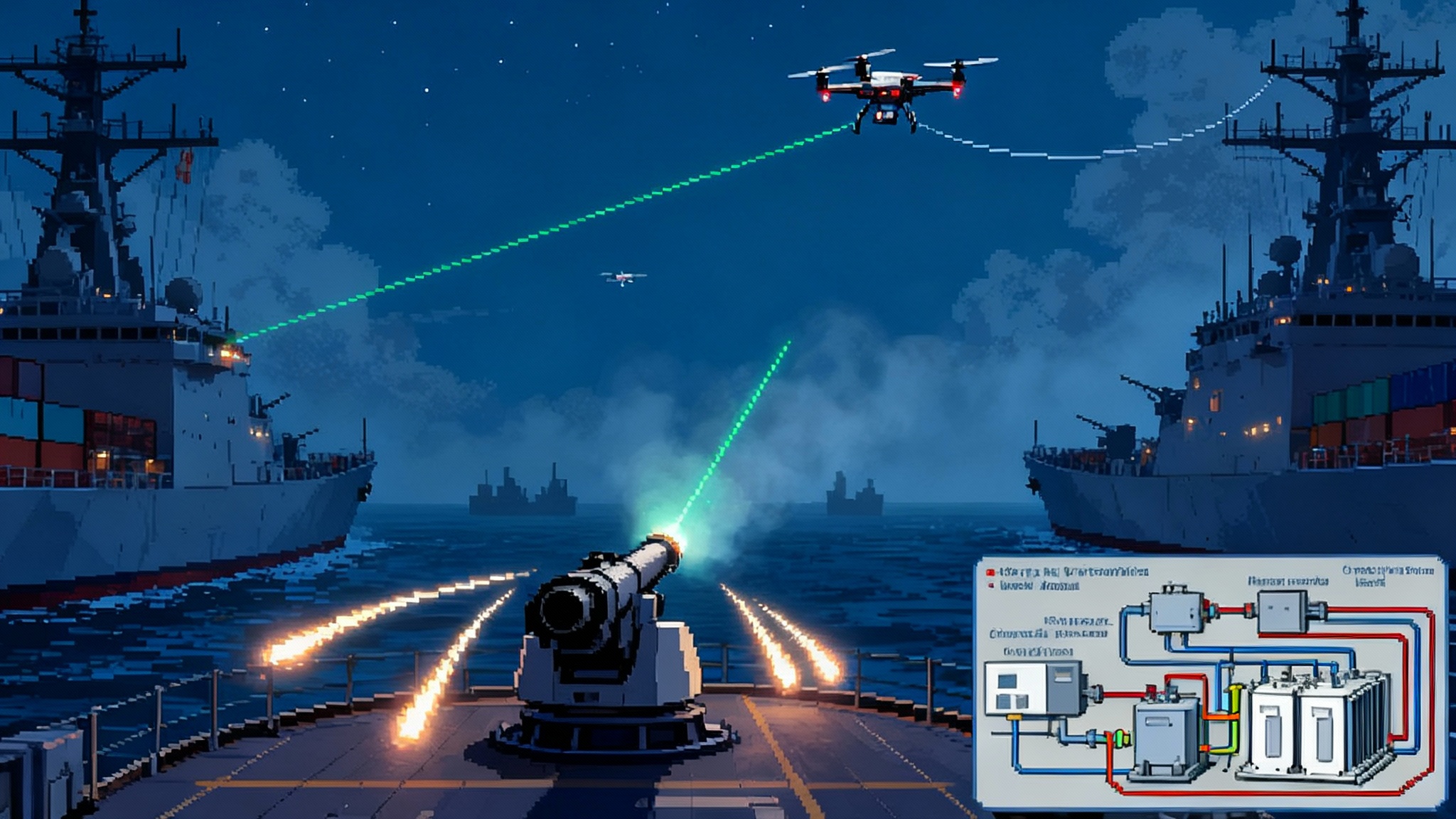Ghost Shark goes fleet: Australia’s bet on autonomous subs
Australia just moved Ghost Shark from prototype to fleet, committing A$1.7 billion to field dozens of extra‑large autonomous subs within five years. The decision signals a pivot from slow, crewed AUKUS timelines to scalable undersea autonomy.

A quiet revolution under the waves
Australia has turned a headline experiment into a fleet. Canberra has signed a five‑year, A$1.7 billion contract for dozens of Ghost Shark extra‑large autonomous undersea vehicles, to be built in Australia and delivered to the Royal Australian Navy. Officials framed Ghost Shark as a long‑range ISR and strike asset that complements the future nuclear‑powered attack submarines rather than replacing them. The scale, price, and tempo make this a striking departure from traditional undersea acquisition. It is also a marker for where Indo‑Pacific deterrence is heading by the end of the decade. Australian defence leaders announced the A$1.7 billion contract.
From idea to program in roughly three years
In 2022, Australia co‑funded three Ghost Shark prototypes and a modular payload roadmap. The first vehicle arrived early, then sea trials followed, and now a full program of record is in place. Low‑rate production has already begun, with plans to ramp in the near term. The contract reportedly moved from signature to fleet order in about three years, a timeline that would be unthinkable for crewed submarines. Reporting indicates the order was signed on August 26 and emphasizes production at scale over the next five years. That speed, plus the deliberate ambiguity around quantities, are part of the capability’s deterrent value. See the order signed on Aug. 26 and rapid ramp.
Why Ghost Shark now
Three forces are converging.
-
Time. Australia’s conventionally armed, nuclear‑powered submarines under AUKUS will not reach critical mass for years. Autonomous vehicles offer near‑term mass and persistence. They can be fielded in numbers, iterate quickly, and add risk to an adversary’s planning cycle well before the first new crewed boats arrive.
-
Cost. Even without disclosing unit prices, dozens of Ghost Sharks for A$1.7 billion imply a very different cost curve than legacy submarines. Each autonomous hull is a fraction of a crewed attack submarine. That makes losses tolerable and upgrades frequent. In a contest of adaptation speed, the platform that can be rebuilt or improved on a one‑ to two‑year cadence holds an edge.
-
Mission flexibility. Ghost Shark is conceived as a carrier for payloads. Intelligence collection, seabed warfare, decoying, strike, minelaying, and gateway functions for other uncrewed systems are all plausible. Modularity lets Australia swap payloads as sensors, batteries, and software improve.
Shifting from exquisite scarcity to scalable autonomy
AUKUS was born to deliver a handful of superb nuclear‑powered submarines. That remains essential for deep, stealthy patrols and for the most demanding combat missions. Yet the experience of high‑end conflict and rapid drone evolution has made a different logic unavoidable: mass matters. A fleet of attritable, all‑electric XLUUVs that can deliver effects at long range forces opponents to widen their surveillance footprint, dilutes their magazine depth, and complicates their targeting.
This is not an either‑or choice. The future Indo‑Pacific undersea order of battle looks like manned boats operating with swarms of uncrewed teammates. Crewed submarines focus on the hardest tasks. Autonomous vehicles scout, deceive, map, seed the seabed, and strike opportunistically. If a Ghost Shark is lost, the unit is replaced without a decade‑long skills pipeline or a strategic political shock.
The transparent oceans debate, updated
For decades, submarines banked on acoustic stealth. That premise is being contested by rapid advances across multiple sensing modes:
- Distributed acoustic networks that blend fixed seabed arrays, drifting autonomous gliders, and towed sensors on uncrewed surface craft.
- Magnetic anomaly detection with better signal processing and more sensitive magnetometers, including quantum‑enhanced variants.
- Quantum and atom‑interferometry gravimeters that could, in time, cue searches to mass anomalies near the seabed.
- AI fusion that stitches noisy sensor feeds into probabilistic tracks, then tips and cues patrol aircraft, satellites, or vessels for closer look.
None of this makes submarines obsolete. It does pressure the advantage of a few ultra‑quiet, ultra‑expensive crewed boats operating alone. The counter is mobility, deception, and numbers. Ghost Shark aligns with that: increase the number of undersea emitters and decoys, reduce per‑platform signatures and costs, and flood the battlespace with uncertainty. If oceans are becoming more transparent at the margins, the answer is not fewer assets but smarter, more numerous, and more agile ones.
Cost, speed, and the industrial base gap
- Cost. A single nuclear‑powered attack submarine absorbs billions and ties up scarce industrial skills for years. A fleet of autonomous vehicles spreads dollars across a wider supplier set and allows more frequent batch buys. Australia has kept the exact Ghost Shark quantity opaque, but the math of A$1.7 billion for dozens points to an order‑of‑magnitude cheaper path to underwater presence per hull.
- Speed. Ghost Shark moved from co‑development to a signed fleet contract in about three years, with production already underway. By contrast, crewed submarine programs have lead times that span decades. Even other XLUUV efforts overseas have wrestled with delays and redesigns. Australia’s approach compressed cycles by building prototypes fast, testing early in local waters, and standing up manufacturing while trials continued.
- Industrial base. The contract explicitly seeds an Australian supply chain. Government statements highlight 120 existing jobs at the prime, more than 150 new high‑skill roles at the factory, and over 40 local companies contributing, with roughly 600 additional jobs expected across the suppliers. That is modest next to a nuclear‑submarine yard, but it builds sovereign capability in autonomy, batteries, composites, and undersea sensors. Those are exportable and reusable across maritime programs.
What it signals for U.S. and U.K. doctrine
- Manned‑unmanned teaming moves to the center. The U.S. Navy and Royal Navy have been experimenting with large uncrewed undersea vehicles, but Australia’s move puts operational mass on the calendar. Expect more emphasis on payload modularity, common control systems, and shared autonomy stacks across AUKUS so vehicles can be retasked and supervised by any partner’s operations center.
- Offboard effectors become routine. Crewed boats will increasingly carry, deploy, or task uncrewed vehicles for ISR, seabed warfare, or strike. The payloads matter more than the host platform. That favors open architectures and rapid payload certification pipelines.
- Training pipelines change. Submarine crews will still be the premium resource, but navies will need many more undersea autonomy operators, payload specialists, and data fusion analysts. The skills are closer to software and systems integration than to traditional naval ratings.
Export controls, proliferation, and AUKUS Pillar II
The United States, United Kingdom, and Australia spent 2024 implementing major export‑control reforms for AUKUS collaboration. By September 2024, Washington and partners had created a largely license‑free environment for most trade among the three, with exclusions for the most sensitive technologies. Canberra’s Ghost Shark move will stress‑test that new regime under Pillar II, where autonomy, AI, and undersea systems sit alongside hypersonics and electronic warfare.
There is an edge to this sword. Lower friction for collaboration among allies reduces time to field. It also raises questions about onward proliferation. XLUUVs are not nuclear submarines; they are cheaper, flexible, and attractive to mid‑tier militaries. Australia’s program is likely to catalyze demand across close partners who want long‑range ISR, mine warfare, and persistent undersea presence without the costs of a submarine arm. Managing that appetite, while protecting sensitive autonomy, acoustic signatures, and undersea payload tech, will challenge regulators and industry.
Likely counter‑ASW responses
Adversaries will not sit still. Expect several moves before 2030:
- Seabed sensor webs. More fixed arrays near chokepoints, cable routes, and likely UUV lanes, with energy harvesting to extend life. Autonomous seabed nodes can wake and cooperate when cues are detected.
- Airborne and surface magnetometers. Better atomic and diamond‑based sensors mounted on drones and patrol aircraft to sweep broad areas for anomalies, then hand off to narrow‑aperture acoustic hunts.
- AI fusion across platforms. Large language model style architectures adapted for multi‑modal sensor fusion will triage vast acoustic and magnetic datasets, learning local ocean signatures and flagging outliers more quickly than human analysts can.
- Hunter‑killers that are also uncrewed. Expect greater investment in hostile UUVs that hunt other UUVs, and in uncrewed surface vessels towing lightweight arrays tuned for low‑speed contacts.
- Counter‑UUV minefields. Smart mines designed to discriminate small electric signatures and to target uncrewed vehicles specifically, forcing UUVs to spend more time on mine avoidance and slowing their transit.
How Ghost Shark changes Indo‑Pacific deterrence by 2030
By the late 2020s, the region could see dozens of Australian XLUUVs on rotational patrols from Australia’s west and east coasts, staging through forward sites, and operating as teamed packs with P‑8A patrol aircraft, surface combatants, and eventually with Australia’s future SSNs. If Australia and partners standardize autonomy and control interfaces, U.S. and U.K. operations centers could supervise or retask Australian vehicles during combined operations, and vice versa. That interoperability increases the daily weight of presence without a proportional increase in crewed deployments.
For an adversary, the problem set becomes thornier. Instead of a small number of exquisite targets, there are many hard‑to‑find, low‑signature platforms with unpredictable payloads. Each one might be mapping seabed infrastructure, deploying sensors, trailing a high‑value unit, or acting as a decoy. The cost to surveil and sanitize sea lanes rises. The risk of surprise increases. That is classic deterrence by denial and by punishment: make success costly and uncertain, and hold valuable assets at risk.
Risks to watch
- Autonomy reliability. Long‑range autonomy in complex littorals is hard. Navigation drift, unexpected currents, acoustic clutter, and adversary jamming can trip up even the best software. Early operational wins will depend on conservative mission plans and robust remote supervision.
- Energy density and mission endurance. Battery improvements will expand mission profiles, but range, payload, and stealth will always trade off. That pushes both to new chemistries and to clever logistics, like underwater charging hubs and mothership concepts with surface or crewed submarines.
- Communications and control. The more you communicate, the more you risk detection. The trick is sparse, encrypted, and unpredictable comms, with autonomy buffering long silent periods. Interoperable control standards across AUKUS help here, but certification and cyber hardening take time.
- Counter‑UUV warfare. As numbers grow, so will attrition. Designers will need layered survivability: quiet signatures, deception tools, expendable decoys, and tactics that avoid predictable paths.
What success looks like by 2030
- A high‑cadence production line in Australia turning out modular vehicles and payloads on a steady rhythm, with spiral upgrades each batch.
- AUKUS doctrine and training that treat uncrewed undersea systems as day‑to‑day fleet tools, not experiments, with common control software and payload standards.
- Demonstrated operational missions that matter: covert seabed surveys of critical infrastructure, rapid minelaying to close a strait, long‑dwell ISR near an adversary port, and coordinated strikes with offboard effectors.
- A resilient logistics concept for recovery, maintenance, and redeployment that does not overly depend on a few vulnerable ports.
The headline is simple. Australia just bought time, mass, and options under the sea. If Ghost Shark delivers on schedule, by the end of this decade the undersea picture in the Indo‑Pacific will feature many more eyes, ears, and teeth in places that matter. That changes how everyone moves, hides, and plans. It shifts deterrence from a promise of future capability to the friction of present reality.



